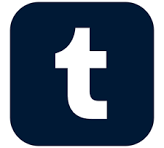This latest fact is a big problem for Nike’s plans under the Executive Director Elliott Hill, who this year launched Vomero 18 to win runners who switched to other brands. Vietnam has become a global center for production shoes – and this week it is subject to some of the most punished US tariffs imposed by US President Donald Trump.
Trump said he wanted to return production to the US shores. Analysts say the higher prices for coaches will be more likely, as there are not enough factories with specialized equipment in the United States to make sneakers and workers from Know -Khau to manage them.
On the basis of the United States, Nike began manufacturing in Vietnam in 1995 through five factories on contract shoes, becoming one of the earliest foreign investors in the country and contributing to its exports and economic growth. In the following years, the company quickly expanded the supplier base and created thousands of jobs, attracted by cheaper labor.
Nike Vietnam now has 130 factors of suppliers in shoes, clothing and equipment, and the country is half the shoe production.
AdidasHis rival, based in Germany, receives 39 percent of shoes from the country of Southeast Asia.
The new 46 -percent Trump tariff will be applied by 20 percent, which are already paid in the US to import sports shoes with a textile top, reports the American Association of clothing and shoes.
Manufacturers can open factories for coaches in new countries, but relocation of shoe supply chains usually takes about two years, said Chris Rogers, head of supply chain study in S&P Global Market Intelligence. Companies usually plan such changes on the five -year cycle.
Adam Cocran, Analyst Deutsche Bank, suggested that Mexico, Brazil, Turkey and Egypt can be alternatives to Vietnam as production centers. However, from the duration of the order contracts with the suppliers will take from 18 to 24 months to make any decision lead to material changes on the ground.
Also Trump imposed so -called reciprocal Tariffs with a minimum speed of 10 percent on almost every trading partner. For large shoes such as China and Indonesia, new tariffs are more than three times.
“Searching for a cheaper market, without leaving the planet, will be tough,” said David Markot, Senior Retail Vice President in Consultancy Kantar.
Nike did not respond to a comment request. In the quarterly report submitted on Thursday, the company said: “We move some external factors that create uncertainty and volatility in operating conditions, including, but not limited to geopolitical dynamics, new tariffs, tax regulation and fluctuations in exchange rates.”
The company last year was intended Hill As the CEO after the fall of sales as a sneakery from smaller competing brands, such as ON and Hoka, seized the market share.
This week, his shares fell to a nearly eight -year minimum when investors were frightened for the costs of Trump’s new tariffs.
For brand shoes “You have three main paths in terms of mitigation,” said Dylan Canden, analyst William Blair. “You can push off to get vendors (so) pay you less. You can try to click on consumers and charge more. Or you can eat it.”
Cochrane estimates that Adidas and Puma, another brand based in Germany, with extensive production operations in Vietnam, will need to increase prices in the US by about 20 percent to maintain gross profit after tariffs, although rising prices can extend over time to reduce market damage. Both companies may be better than Nike because they sell less in the US, he said.
Felix Denl, analyst Metzler Bank, said Adidas was “well placed” to increase prices due to “a wide impulse brand in lifestyle, and in performance segments”.
Puma, on the other hand, believe that “it is much harder to convey an increase in expenses” because its efforts in the rebrand as a reimbum of premium replacement Executive Director Puma Arn Frendt Thursday.
Overall, sports products “study the product range in the US,” Denl said, stopping less profitable products.
Adidas refused to comment. Puma has stated that it has “a multi -storey origin strategy, and many long -term partners in our suppliers can produce in several different countries.”
Vietnam received a new wave of production investments during Trump’s first term as a trading war with Beijing, which pushed the company to move production from China. Vietnam’s suppliers are not only local companies, but also South Korean and Taiwan groups that work there.
Migration in Vietnam last year led its trade surplus from the US to $ 123.5 billion, the third largest after China and Mexico. The White House used the trading balance numbers calculate “Mutual” tariff rates in each country.
Cochrane, Deutsche Bank analyst, said the coaches brand may have to “reduce the volume of the order and transfer more products to Europe, the Middle East and China”, which could lead to competition in these regions.
In the US, where 99 percent of the shoes are imported, Carden said the market could become more like the Soviet Union if Russian residents paid a beautiful Levy jeans prize.
“We are behind the iron curtain,” he said.
Data analysis from Clara Murray
https://www.ft.com/__origami/service/image/v2/images/raw/https%3A%2F%2Fd1e00ek4ebabms.cloudfront.net%2Fproduction%2Fa2a9b5c0-9a61-427b-a5bc-04a0a8271084.jpg?source=next-article&fit=scale-down&quality=highest&width=700&dpr=1
2025-04-06 04:00:00




























